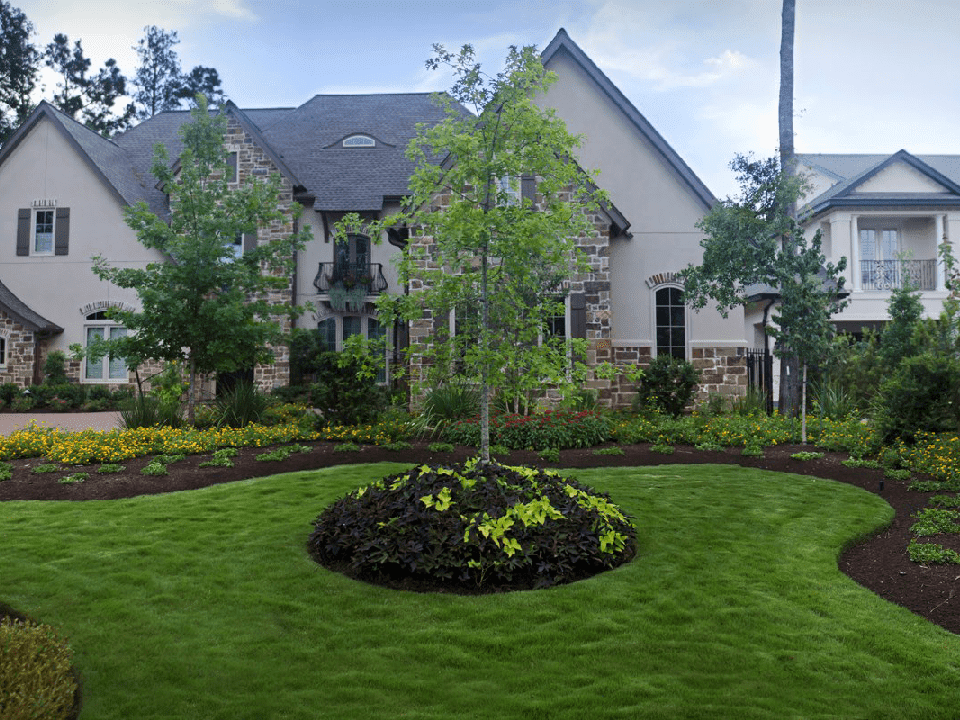The 9-Second Trick For Hilton Head Landscapes
Table of Contents5 Easy Facts About Hilton Head Landscapes ExplainedHilton Head Landscapes - An OverviewThe Only Guide for Hilton Head LandscapesIndicators on Hilton Head Landscapes You Should KnowAbout Hilton Head LandscapesHilton Head Landscapes - The FactsSome Known Incorrect Statements About Hilton Head Landscapes
Line creates all types and patterns and can be made use of in a range of methods in the landscape. Line in the landscape is developed by the side in between two materials, the rundown or silhouette of a form, or a long straight feature. Lines are an effective tool for the designer because they can be utilized to develop an infinite variety of forms and types, and they control activity of the eye and the body.

Lines in the landscape. The homes of lines figure out just how individuals react to the landscape, both mentally and physically.
The Greatest Guide To Hilton Head Landscapes
Straight lines are usually found in hardscape sides and product. Rounded lines develop an informal, natural, kicked back character that is connected much more with nature and asymmetrical equilibrium. Bent lines move the eye at a slower speed and add mystery to the area by producing covert views. Vertical lines move the eye up, making an area really feel bigger.
Upright lines in the landscape include tall, narrow plant product, such as trees, or high frameworks, such as an arbor or a bird home on a pole. Straight lines relocate the eye along the ground aircraft and can make an area really feel bigger. Low lines are more controlled and develop a feeling of remainder or repose.
6 Simple Techniques For Hilton Head Landscapes
Lines are also produced by the vertical types of built functions and plant material. There are three key line kinds that create form in the landscape: bedlines, hardscape lines, and plant lines.
Bedlines connect plant material to your home and hardscape because the eye complies with the line, relocating the stare with the landscape. Hardscape lines are produced by the edge of the hardscape, which defines the built structure. Line can also be produced by long and narrow materials, such as a fence or wall surface.
The Main Principles Of Hilton Head Landscapes
Kind is located in both hardscape and plants, and it is normally the dominant visual aspect that spatially arranges the landscape and often figures out the design of the garden. The form of frameworks, plant beds, and garden ornaments likewise establishes the overall kind theme of the garden. Official, geometric kinds include circles, squares, and polygons.
Plants create kind in the yard via their details or silhouettes, however type can also be defined by a void or negative area between plants - hilton head landscapers (https://www.ted.com/profiles/47214730). Circles can be full circles, or they can be divided into half circles or circle sections and combined with lines to develop arcs and tangents
A Biased View of Hilton Head Landscapes
Circles can likewise be extended into ovals and ellipses for more selection and rate of interest. Circles are a strong layout kind since the eye is always drawn to the facility, which can be used to highlight a prime focus or connect various other forms. Number 2. Round types in hardscape and lawn panels.
The square kind can also be fractional and secondhand consistently to create a grid pattern. Unlike circles, squares are stronger on the brink, which can be lined up or overlapped to produce one-of-a-kind patterns and more intricate types. Polygons are many-sided types with straight sides. Triangles, as an example, are three-sided polygons.
Twisting lines usually imitate the natural training course of rivers or streams and can be defined as smooth lines with deeply rounded wavinesses. Twisting lines (Figure 3) function well for pathways, plant bedlines, and dry stream beds. Meandering lines can add interest and mystery to a garden by leading viewers around edges to find brand-new views and areas.
The Facts About Hilton Head Landscapes Uncovered

Usual plant forms are well developed and standardized, as type is the Discover More Here most consistent and well-known characteristic of plants. Form can likewise be developed through the massing of plants, where the overall mass produces a different form than an individual plant.
A highly contrasting type should be made use of with careone or more job well as a focal factor, however a lot of wreak havoc. All-natural plant types, instead of over-trimmed forms, ought to develop the bulk of the composition. The significance of general form is much more or much less dependent on the watching perspectivethe kind of a tree can show up fairly various to an individual standing under the cover versus viewing the tree from a distance in an open area.
The 15-Second Trick For Hilton Head Landscapes
Plant forms additionally develop and specify the space or open rooms between the plants, creating either convex or scooped types in deep spaces. High-arching tree branches generally produce a concave open room under the branches, and a round canopy with low branches fills the space to create a convex form outdoors area under the tree.
